People often (once) ask me what I use to create my videos. It’s been a bunch of different stuff over the years, but I think I’ve settled on a good setup.
TLDR: I reckon a good camera and a tripod/selfie stick is pretty much all ya need.
Sony ZV-1 Camera
This thing is amazing and I wish it existed when I started. It’s essentially the latest in Sony’s RX100 compact point & shoot line, but tailored for video. So it’s a massive sensor, zoom lens, integrated stereo mic and 4k recording in a tiny 300 gram package.
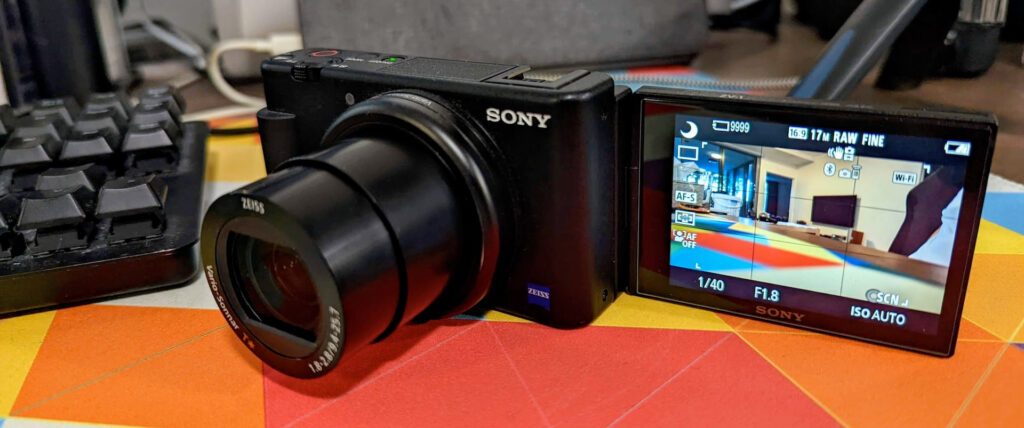
This isn’t the perfect camera. The stabilisation isn’t very good and the highest level crops in and makes the image less sharp, so I generally turn it off and take care with the framing. It also caps out at 30fps, so none of that sweet slow mo b-roll. Finally it records in h264 rather than h265, which is fine but the video takes up at least double the space.
But the image quality is stellar and I love it and I’m very happy.
Tripod/selfie stick
It’s easy to giggle at the sheer vanity of a selfie stick, but I am a vlogger after all!
The ones I’ve found the most utility from are essentially mini tripods. They combine a tripod base, telescopic pole, and standard screw thread (1/4-20 UNC) so I can mount pretty much anything from a microphone, my phone, camera or GoPro and stick it in place.
I’ve taken some variation of these around the world, from the windy cliffs of Lisbon to the window in Iceland trying to catch a glimpse of the northern lights.
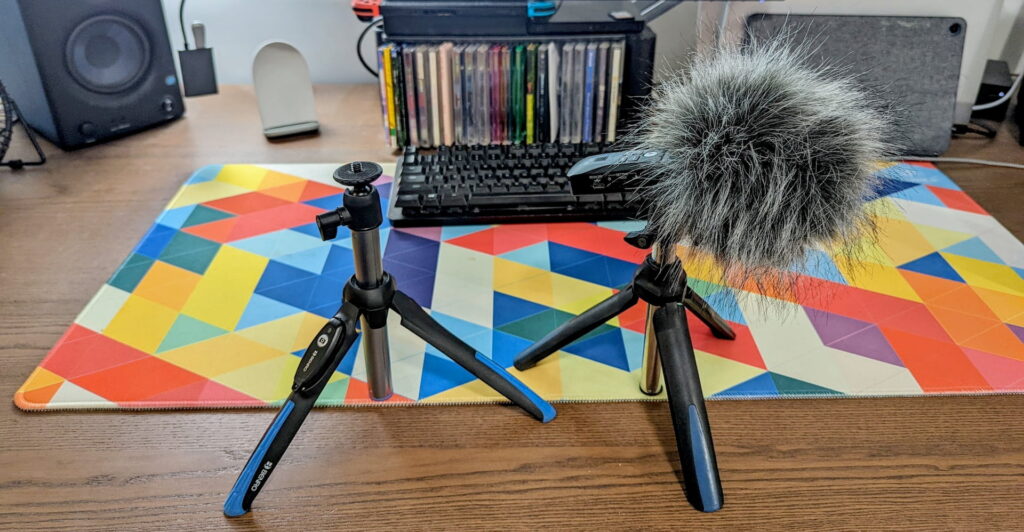
I’m on my second one now, the Benro BK15 Selfie Stick & Mini Tripod w/Bluetooth Remote. I don’t use the remote, ever. But the stick is sturdy, doesn’t move from wherever you stuck it.
The BK10 started to flex on me after a few years, but the BK15 is the next generation and feels a lot more solid.
Pixel 6 (phone cam)
I was a big believer in using my phone to vlog. I can whip my phone out of my pocket and be recording in seconds. But the quality isn’t there.
I bought into the Apple hype and trialled a 12 Pro Max and it produced such god-awful video that I never released the vlog, destroyed the evidence*, and returned the iPhone for a refund.
I ended up getting the Pixel 6 which apparently uses some form of software HDR while recording video, but I wish I could turn it off because often the sky is blown out to a deep blue colour while the rest of the picture is heavily compressed and mushy looking. The stabilisation is super janky, and I’ve seen the stock standard stabe warp the image. AND I’ve noticed dropped frames in videos at 60fps. If you’re interested you can see all of this in action on my Australian Christmas video which is shot entirely on the Pixel 6.
I’m being hard on the video because it’s a selling point and it’s truly not good enough. I’ve had much better results out of Filmic Pro because it doesn’t use all the Pixel magic, but that’s slower and requires a lot more care to get a good shot.
But I digress! I use my phone from time to time when I don’t have my camera on hand. It’s not amazing quality, but it does alright.
GoPros for B-Roll
I also used a couple of GoPros, the Hero 7 is currently my main wide angle/action/time lapse camera. You can see it in action a fair bit on my Macleay Island video. I have a chest strap which I use on the bike, as well as a standard 1/4-20 UNC mount that I can use on the tripod. The built in mic is not great at all, so I mostly use it for b-roll and time lapses.
I also have a GoPro HERO5 Session which is a tiny baby, but only barely does 4k so I mostly use that for time lapses as well.
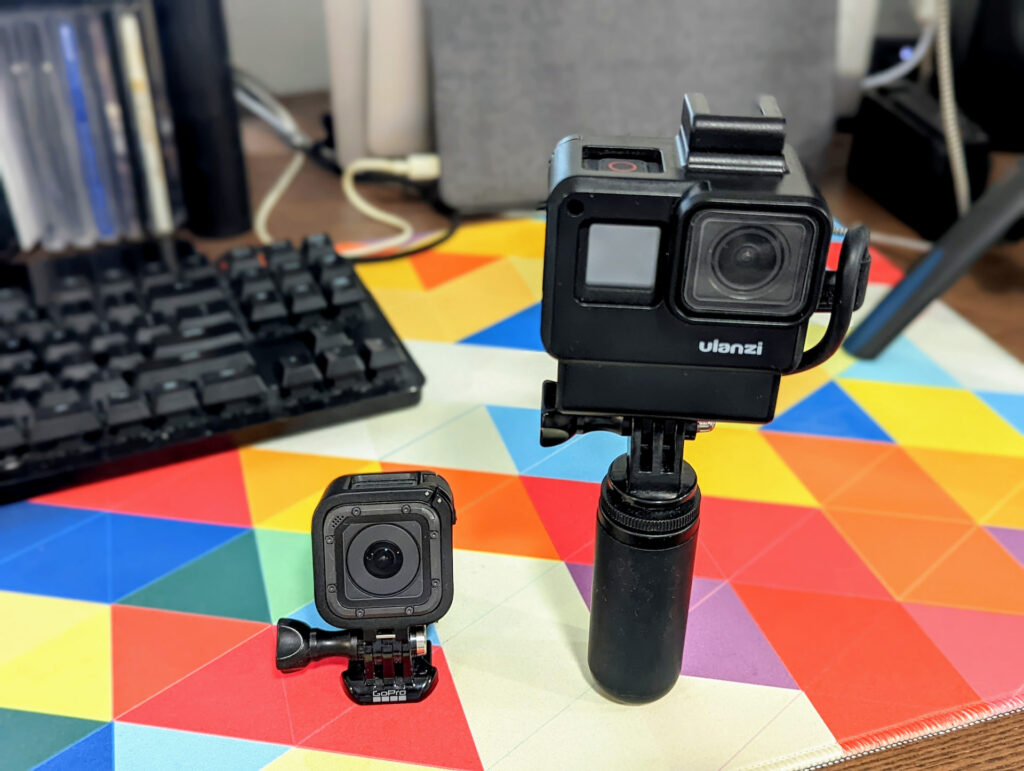
In the pic you can see the Ulanzi cage which holds the microphone adapter for the GoPro. I originally wanted to use this as a handheld vlog cam, and it might still be good for that on hikes and things because of the incredible stabilisation. But I haven’t really found myself using it and I wish the GoPro just came with a damn 3.5mm jack.
Other gear
- Zhiyun Crane – I picked this up second hand on ebay but I hardly used it because it’s big and chunky and super slow to set up. But I used it recently at Botanica and I think I’m getting a feel for it. It’s great to stabilise the ZV1 when there’s a lot of movement, but I think it’s a special occasions kind of thing.
- Zoom H1n – this is an excellent microphone. I’ve mostly been using it as my video conferencing WFH mic lately, but it’s a fantastic stereo mic which I use to capture ambience and sound floor for my videos. Or at least, that’s the intention, it runs flat really quickly on rechargeable batteries so I haven’t used it as much as I’d like.
- Rode VideoMicro – a little shotgun mic I can mount on my camera. It’s good for talking-to-camera vlog style shots because it isolates my voice. But it’s only mono and I haven’t worked out the best way to integrate it with my workflow. Most of the time the built in ZV1 mic is more versatile.
- DJI Mini 3 Pro – This is a new addition. There was one shot I desperately wanted to get in my Gympie vlog which was an epic drone shot of the Mary Valley Rattler crossing Deep Creek. I didn’t get that shot, but I did get the Mini 3 when it was released shortly after. I’m excited to play with it more.

Davinci Resolve video editor
I switched to Mac in 2017 in part because video editing on Linux is an absolute nightmare.
I started out with iMovie which I used for all of my vlogs up until 2020. My first real full Davinci vid was last year’s Brisbane Festival roundup, which took a VERY long time to pull together while I learned how stuff works. Quite ambitious.
But I think I’ve gotten a lot better and faster at it.
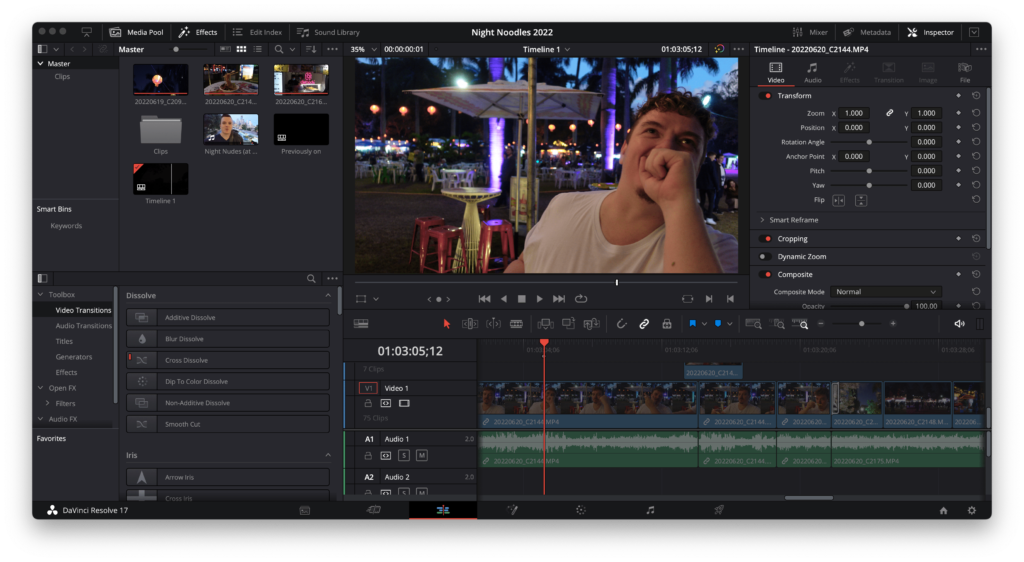
There’s not a lot of other software I use, but in the past I’ve used Krisp to recover bad audio, and I’m generally a fan of youtube-dl to rip old youtube vids of mine, ffmpeg to occasionally perform some repairs on a video, or Handbrake for tweaking the encoding. I also use rev.com for better or worse when I’m in a hurry and don’t feel like doing my own captions.
Honorary mention Pixel 2 XL (retired, 2018-2021)
This was my primary vlog cam for pretty much the entire time I was overseas. This was an awesome little unit. It couldn’t do much, but it was my first 4k camera and it’s what started everything!
One little gadget I used to take everywhere was the Windblocker. That thing saved my audio on countless occasions and if you’re vlogging with a phone I can’t recommend it enough.
After three and a half years, this thing was so battered around that I upgraded to the Pixel 6 on release day and gave this one away for free on Gumtree to a gentleman who seemed to really appreciate it.
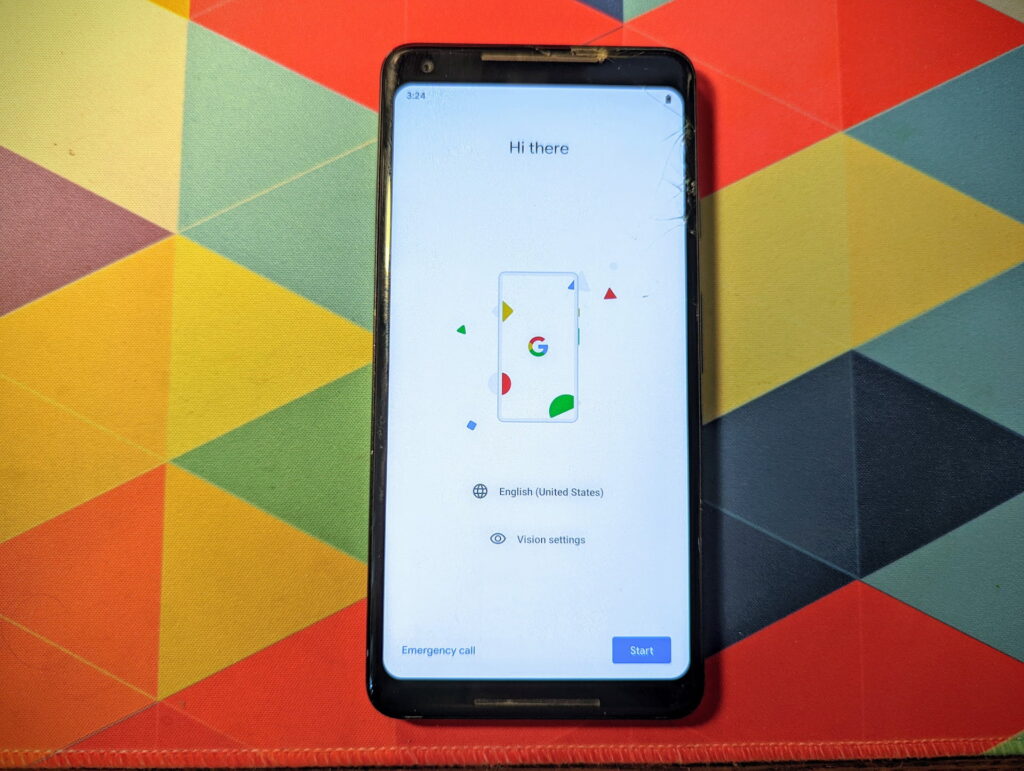
That’s about it
What’s your video set up look like? Is there anything I’m missing? Shoot me an email!








